🔍 Search Report
Search intent, uncovered for admins: Discover what your users are searching for in Confluence.
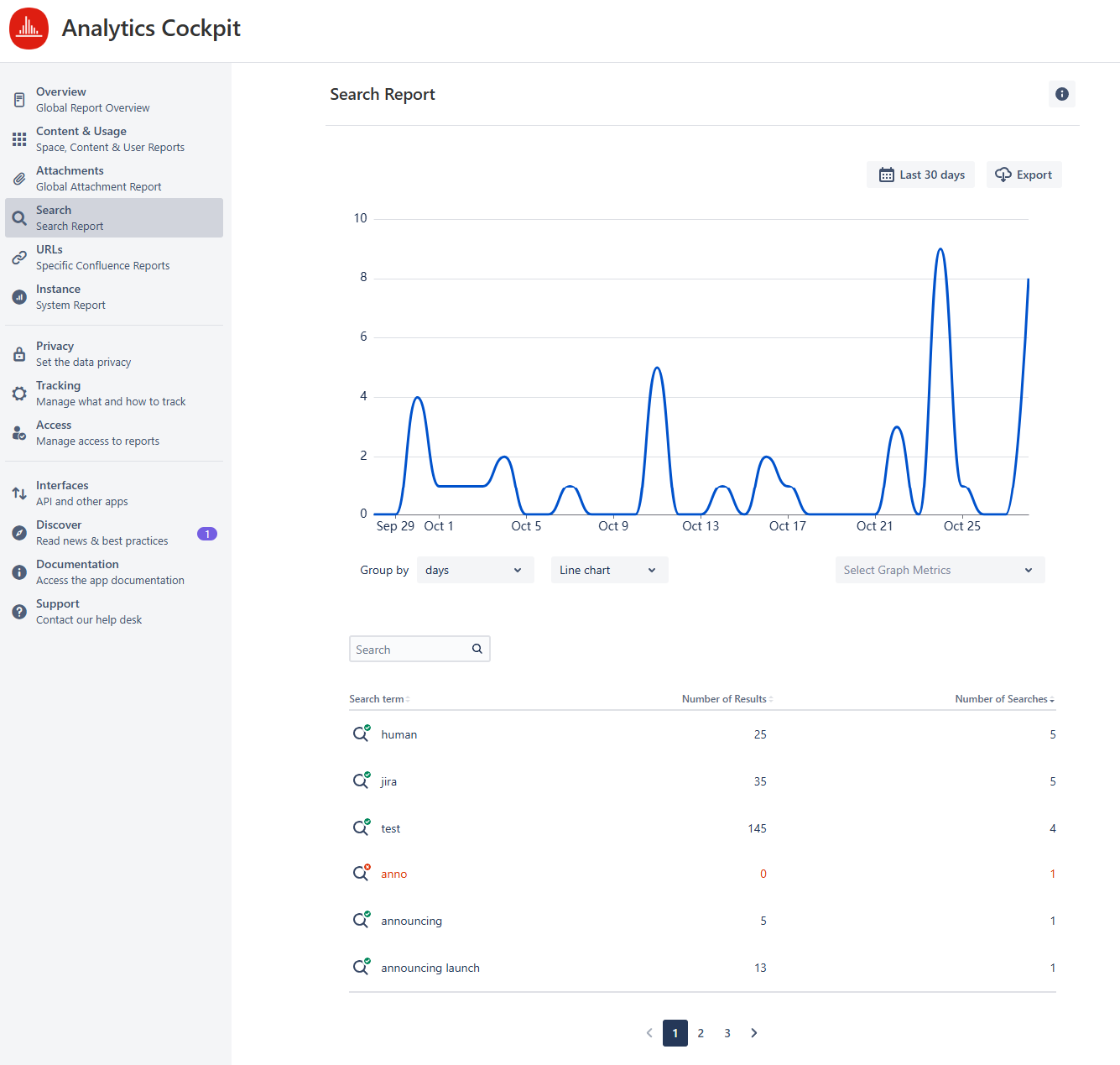
Screenshot of the Search Report
Overview
The Search Report lets Confluence administrators track their users' search activity. It helps uncover important keywords, missing content, and popular searches in your intranet.
The report tracks searches performed in the main Confluence search field. It does not track searches/filters in the Space or People Directory.
Since the summer of 2022, searches carried out via Brikit Targeted Search are included in Viewtracker’s Search Report.
Search Report
The Search Report consists of:
A graph showing the overall number of searches over the selected timeframe (default: last 30 days)
A table listing:
Search terms: what your users inserted into the search field.
The number of results: how many results Confluence found for that particular search term.
The number of searches: how often users carried out this particular search.
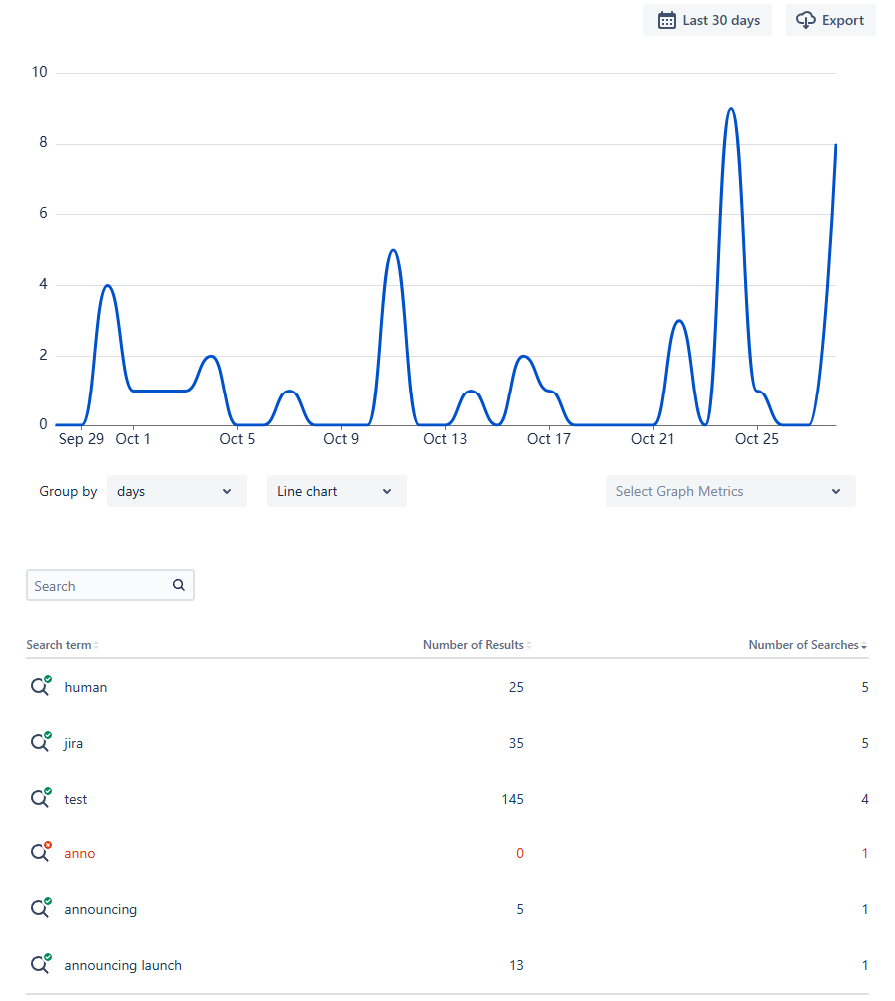
Another screenshot of the Search Report
What is tracked?
The app treats everything a user enters into Confluence's main search field as a unique search term, except when specified otherwise in app settings (see configuration options below ↓).
Partial Searches: If a user begins typing and then selects a suggested result, the app will register only the text entered up to that point, meaning some search terms may appear incomplete or “chopped.”
Inactive Searches: After three seconds of typing inactivity, the app captures any text entered so far as a distinct search term, even if it’s incomplete.
Exclusions: Common stop words (such as “to,” “not,” “or”) and symbols won’t be registered as search terms.
Filters: The app does not track any filters that users select during their search.
Why do the number of results vary?
The number of search results may vary because Viewtracker records only the results that Confluence makes available to each user.
If an admin searches a term that includes restricted content, Confluence will display those results, and Viewtracker will record the suggestions accordingly.
When a regular user searches for the same term, restricted content won’t appear in their suggestions. As a result, Viewtracker will register fewer or even zero results for the search term.
Filtering the Search Report
Use the search field below the graph to filter the table for specific search terms (or parts of them).
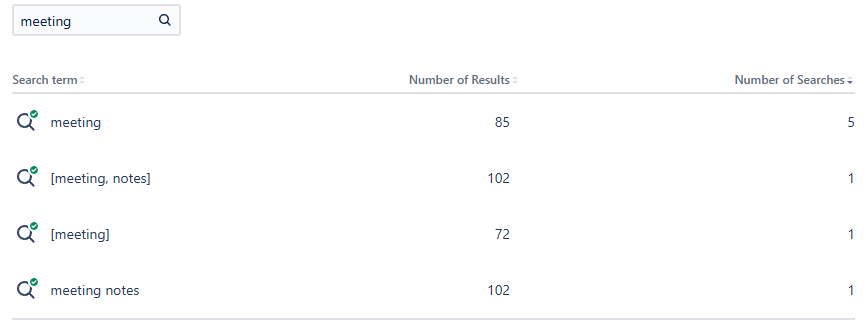
Screenshot: Filtering the search report
Changing the date range
By default, the report shows data from the last 30 days. To adjust this:
Click the date field to select a new range; all metrics will update automatically.
Use the “Group by” option to view data by days (default), weeks, months, or years. You can also change the graph style to Line (default), Bar, or Area.
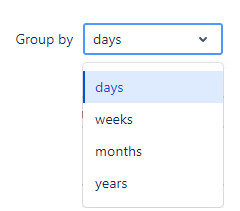
Available time filters.
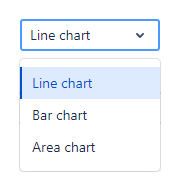
Available chart types.
Choosing which metrics to display in the graph
Under the graph, there’s a dropdown menu listing available metrics. By default, “Searches” is selected.
Select the desired metrics to update the graph automatically.
Viewtracker saves your metric selection, so the chosen metrics will display whenever you revisit the report.
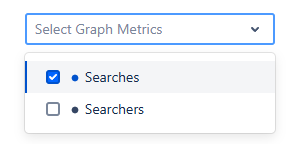
Available metrics for the Search Report
Saving and sharing reports
Once you’ve applied a filter or changed the report's date range, the report’s URL will adapt with parameters like:
?dateValue=this.week&searchText=export.This is useful for the following reasons:
You can copy and share the URL with co-workers who have the same access permission.
You can save the URL to access a customized report quickly.
Export Searches
You can export individual or aggregated searches as a CSV file by using the “Export” button.
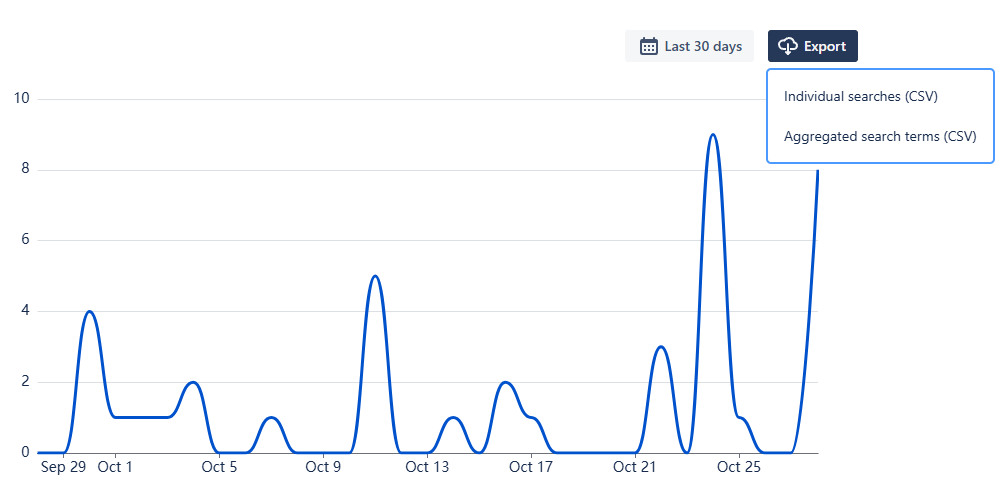
Screenshot highlighting the export options
How to work with the Search Report

Example results for the Search Report
The table shows search terms alongside the number of results (the number of content offered to the user in return) and the number of searches (the number of times this term was searched), providing insights into user search patterns.
Questions | Possible impact on content management |
|---|---|
“Which searches are the most frequent?” |
|
“Which searches delivered zero results?” |
|
“Which searches delivered many results?” | Try the search yourself. Are the most relevant results at the top? If not, consider:
|
Settings
Access the Tracking settings via Analytics Cockpit → Tracking. Here, you can specify:
Minimum length of a search term (default: 3)
If numbers should be included or ignored when entered in the search bar.

Settings available for the Search Report
Since January 2021, the data from the app Search Analytics is included in Viewtracker.
